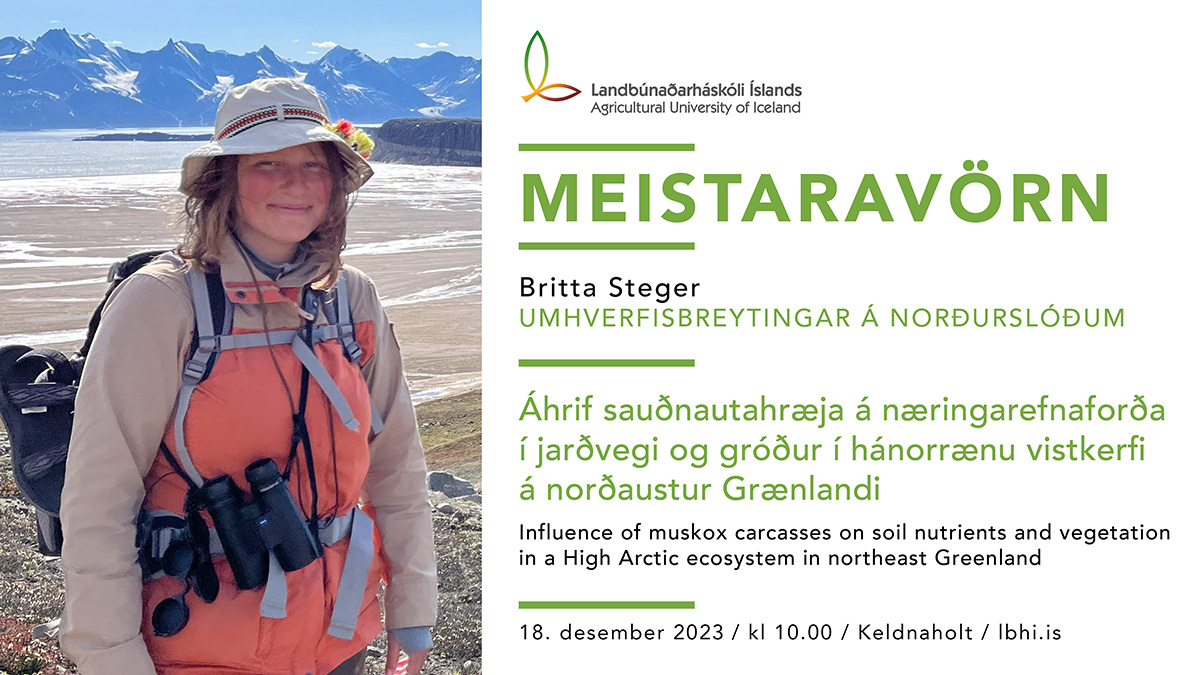Britta Steger defends her master’s thesis in Environmental Changes at Higher Latitudes (EnCHiL) “Influence of muskox carcasses on soil nutrients and vegetation in a High Arctic ecosystem in northeast Greenland” at the Faculty of Environmental & Forest Sciences at the Agricultural University of Iceland.
Britta’s supervisors are Dr. Isabel Barrio, Professor at AUI and Dr. Johannes Lang, researcher at Institut für Tierökologie und Naturbildung Examiner is Dr. Borgþór Magnússon, Ecologist.
The master’s defense will take place on Monday, December 18, 2023, at 10:00 AM at Sauðafell, 3rd floor in the AUI building at Keldnaholt, Reykjavík (Árleynir 22). The defense will also be streamed on Teams; link here. It is important to arrive on time and mute your microphone.
Abstract
Large mammal carcasses provide a source of nutrients that can have a strong influence on soil and plant characteristics. These effects are of particular importance in nutrient-limited ecosystems, like tundra, where nutrient inputs can have long-lasting consequences. However, the research conducted in these systems has thus far been rather limited, rarely examining carcasses beyond five years of age.
For this study, I examined the influence of 16 muskox (Ovibos moschatus) carcasses (between 0 and 43 years old) on bioavailable soil nutrients and plant community composition in northeast Greenland and tested whether bioavailable soil nutrient content varies depending on the age of the carcass. I measured soil nutrient content and plant community composition at carcass sites and at control plots two meters away from the carcass.
Out of twelve soil nutrients analysed, six were significantly higher at carcass plots (N, K, P, Mn, Zn, and S). I also found that plant community composition was significantly different at carcass plots with a gradient towards control plots. Carcass plots were dominated by graminoids, and the abundance of lichens increased with greater distance from carcasses. Notably, I found that species richness was higher at control plots than at carcass plots, indicating a homogenizing effect of graminoids.
At the same time, however, I found no significant differences in the abundance of shrubs and mosses between plot types and, surprisingly, no effect of carcass age on bioavailable soil nutrients, indicating that nutrients remain in the soil for years, decades even. This study thus demonstrates that large mammal carcasses have a dramatic and long-lasting impact on soil nutrient content and plant community composition in the Arctic, contributing to landscape heterogeneity in such a nutrient-poor environment.






